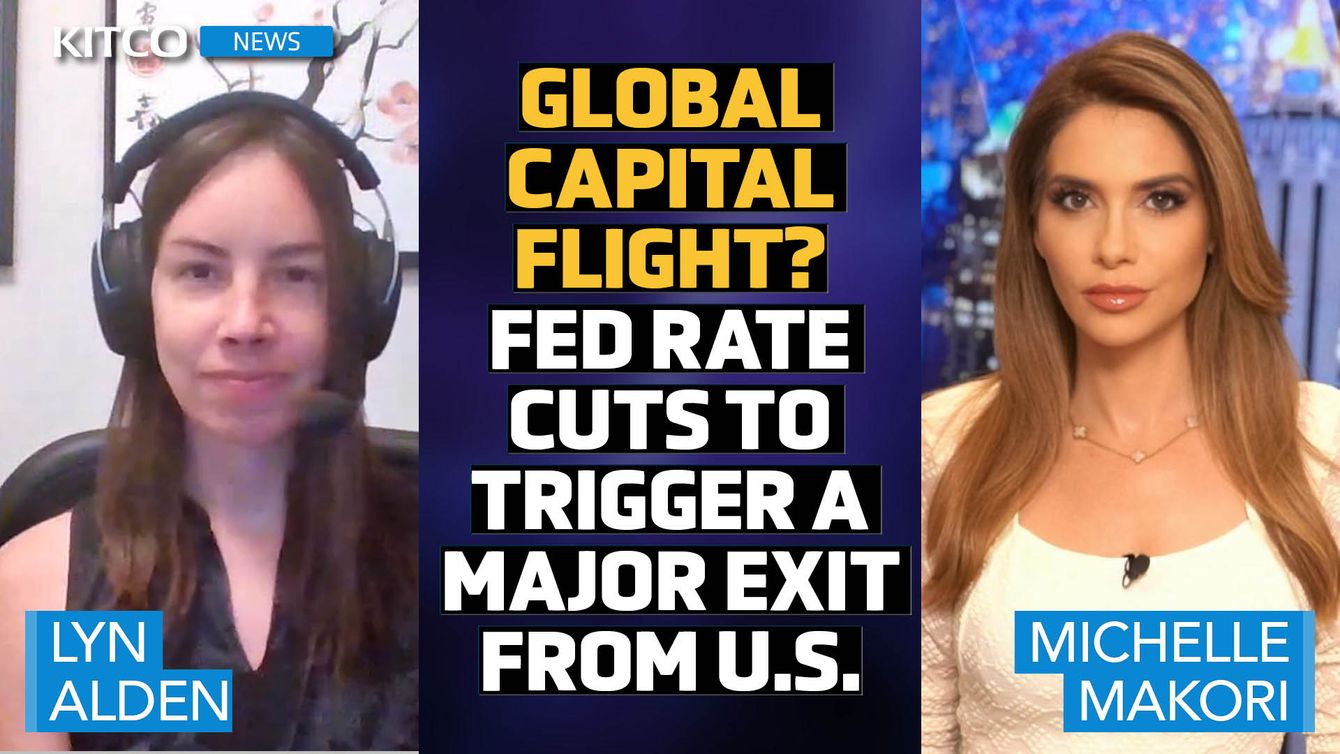Live Spot Gold
Bid/Ask
2,502.102,503.10
Low/High
2,499.202,527.30
Change
-18.80-0.75%
30daychg
+78.70+3.25%
1yearchg
+561.10+28.91%
Silver Price & PGMs

(Kitco News) – A rate cut at the Federal Reserve’s September meeting is practically baked in, but investors need to watch out for the impact on U.S. markets, warned Lyn Alden, founder of Lyn Alden Investment Strategy, who sees a scenario for a potential major capital exodus from the U.S. and into other markets.
Alden told Michelle Makori, lead anchor and editor-in-chief at Kitco News, that the Fed’s rate cuts will, on the one hand, have a limited impact on the U.S. economy since the Fed won’t be returning back to a zero percent interest-rate environment. On the other hand, the markets may see a rotation out of the U.S. and dollar-denominated assets into other markets.
“The cuts are not going to be as effective for large swaths of the economy as they normally are. That’s because when the Fed hit a lower low in interest rates, there’s a lot of refinance refinancing activity among existing mortgages. Everybody can refinance their mortgages and get a free lunch,” Lyn said. “But if we get a higher low in interest rates, then the largest part of the economy – the homeowners and the investment grade corporations – would be fairly unaffected.”
Alden added that she wouldn’t be surprised to see the Fed stop its rate-cutting cycle anywhere between 2% and 4%, which would be a much higher low than the previous zero-rate environment.
However, markets will feel the effects of monetary policy easing as significant portions of foreign capital will start to leave the U.S.
“Right now, there’s a lot of global capital stuffed into U.S. equity markets,” Alden said. “It has not been like this since around the dotcom bubble. If you look at the MSCI World Index, 71% of it is U.S. equities. And a lot of that is unhedged. If you do start to get rate cuts, that potentially eases the dollar. From a foreign investor standpoint, your returns are not doing very well; you’re owning equities priced in dollars, and the dollars have gone down. You could get foreign equity holders pulling out from the U.S. markets.”
In this scenario, there is a potential set-up for “significant capital rotations” out of large-cap U.S. low-volatility equities. For Alden’s insights into which markets this foreign capital will go to, watch the video above.
A Fed’s rate-cutting cycle might be the best catalyst to trigger this capital rotation, according to Alden. “The last time there was a big … rotation was in the early 2000s. This is the next potential period. The last catalyst we had was 2019, but that was derailed by the pandemic and everything else that followed. This is kind of the first serious catalyst in five years for there to be a potential rotation out of crowded U.S. markets and into other markets,” she explained.
What to expect from the Fed
According to the CME FedWatch Tool, the markets are pricing in a 100% chance of a rate cut in September. The only debate among investors is whether the cut will be 25 basis points or 50, with 67% leaning toward the smaller reduction.
Alden noted that markets have sound expectations for September and barring any credit event, she forecasted a gradual rate-cutting cycle ahead.
“If a credit event does not materialize of significant scale to start breaking the market or we get unemployment to spike above 4.5%, you’d probably expect mild cuts. If you do start to get some of those events, we could start seeing 50 or 75 basis point cuts at a time,” she said.
However, Alden does not see rates returning to zero. “My general base case would be to see a higher low in interest rates,” she said. “We’re entering an era of sideways-choppy interest rates. That’s a problem because for 40 years, we’ve had higher public debt-to-GDP, but we’ve had lower rates. So, interest expense on the public ledger has been very manageable. But as we start to go sideways in industry rates, and we vary between 2%-6% for the foreseeable future, while debt-to-GDP is still high and rising, interest expense [becomes] a really serious matter.”
This will have an impact on the U.S. economy and markets. For Alden’s take, watch the video above.
Alden also shared her Bitcoin forecast for the next 6-18 months as well as her Three Pillar Portfolio strategy as the U.S. heads into this coming rate-cutting cycle. Watch the video above to get insights. Posted by:
Jack Dempsey, President
401 Gold Consultants LLC
jdemp2003@gmail.com

